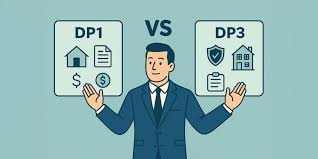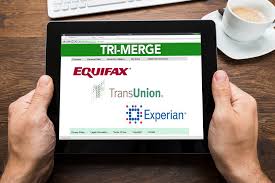Reverse mortgages have long been a vital financial tool for older homeowners seeking to leverage the equity in their homes. These loans, which allow homeowners aged 62 and older to convert part of their home equity into cash, have undergone several significant changes in 2024. These updates aim to improve borrower protections, enhance transparency, and expand accessibility. This article will explore the key changes and updates to reverse mortgages in 2024, providing a comprehensive overview for homeowners and potential borrowers.
Understanding Reverse Mortgages
Before delving into the changes, it’s essential to understand the basics of reverse mortgages. Unlike traditional mortgages, where borrowers make monthly payments to a lender, a reverse mortgage pays the borrower. The loan is repaid when the borrower sells the home, moves out, or passes away. The most common type of reverse mortgage is the Home Equity Conversion Mortgage (HECM), which is insured by the Federal Housing Administration (FHA).
Reverse Mortgage Key Changes and Updates in 2024
1. Enhanced Borrower Protections
One of the most significant updates in 2024 is the enhancement of borrower protections. These changes are designed to ensure that older homeowners are fully informed and protected throughout the reverse mortgage process. Key protections include:
Stricter Counseling Requirements: Borrowers are now required to undergo more comprehensive financial counseling with HUD-approved counselors. This counseling aims to ensure that borrowers understand the implications of a reverse mortgage and explore all other available options.
Non-Borrowing Spouse Protections: Updates have strengthened protections for non-borrowing spouses, allowing them to remain in the home even if the borrowing spouse passes away first. This change addresses previous concerns where non-borrowing spouses faced the risk of foreclosure.
2. Improved Transparency and Disclosures
Transparency has been a critical issue in the reverse mortgage industry. To address this, new regulations mandate improved disclosures:
Clearer Loan Terms: Lenders must provide clearer and more detailed explanations of loan terms, fees, and potential risks associated with reverse mortgages. This includes better explanations of how interest rates and loan balances may grow over time.
Annual Statements: Borrowers will now receive annual statements detailing their loan balance, interest rate changes, and remaining home equity. This helps borrowers keep track of their financial situation and make informed decisions.
3. Changes to Lending Limits and Rates
2024 has also seen adjustments to lending limits and interest rates to make reverse mortgages more accessible and beneficial:
Higher Lending Limits: The FHA has increased the maximum lending limit for HECM loans, reflecting rising home values. This allows homeowners with higher-value properties to access more significant amounts of equity.
Rate Adjustments: Interest rates for reverse mortgages have been adjusted to reflect current market conditions. These changes aim to make reverse mortgages more competitive with other home equity loan products.
4. New Product Options
To cater to a broader range of borrowers, new reverse mortgage products have been introduced:
HECM for Purchase: This product allows seniors to purchase a new primary residence using a reverse mortgage. The updates have streamlined the process, making it easier for borrowers to move to a new home that better suits their needs.
Proprietary Reverse Mortgages: Private lenders have introduced new proprietary reverse mortgage products that are not insured by the FHA. These products often cater to homeowners with higher-value properties and offer more flexible terms.
5. Technological Advancements
The reverse mortgage industry has embraced technological advancements to improve the borrowing experience:
Online Applications: Many lenders now offer online application processes, making it more convenient for borrowers to apply for reverse mortgages from the comfort of their homes.
Digital Counseling Sessions: Financial counseling sessions can now be conducted online, providing greater accessibility for seniors who may have mobility issues or prefer virtual interactions.
6. Focus on Financial Education
In an effort to ensure that borrowers are fully informed, there has been an increased focus on financial education:
Educational Resources: Lenders and government agencies are providing more educational resources, including webinars, guides, and online tools, to help potential borrowers understand the intricacies of reverse mortgages.
Community Outreach: Efforts to educate the public about reverse mortgages have expanded, with community outreach programs targeting seniors and their families to raise awareness about the benefits and risks of these loans.
Impact of the Changes
The changes and updates to reverse mortgages in 2024 are expected to have a significant impact on the industry and borrowers:
Increased Accessibility: Higher lending limits and new product options make reverse mortgages accessible to a broader range of homeowners, including those with higher-value properties.
Greater Protection and Transparency: Enhanced borrower protections and improved disclosures ensure that seniors are better informed and safeguarded against potential pitfalls.
Improved Borrower Experience: Technological advancements and streamlined processes make it easier and more convenient for seniors to apply for and manage reverse mortgages.
The updates to reverse mortgages in 2024 summary
The updates to reverse mortgages in 2024 reflect a concerted effort to improve the safety, accessibility, and transparency of these financial products. By enhancing borrower protections, increasing lending limits, introducing new product options, and leveraging technology, the reverse mortgage industry is better equipped to meet the needs of older homeowners. For those considering a reverse mortgage, it’s crucial to stay informed about these changes and seek comprehensive financial counseling to make the best decision for their financial future.
Reverse Mortgage Frequently Asked Questions
A reverse mortgage is a loan that allows homeowners aged 62 and older to convert part of their home equity into cash. Unlike traditional mortgages, the borrower does not make monthly payments to the lender. Instead, the loan is repaid when the borrower sells the home, moves out, or passes away.
The enhanced borrower protections ensure that you are fully informed about the implications of a reverse mortgage. Stricter counseling requirements and improved disclosures help you understand the loan terms, fees, and potential risks. Protections for non-borrowing spouses also ensure that they can remain in the home even if the borrowing spouse passes away first.
New product options include the HECM for Purchase, which allows you to purchase a new primary residence using a reverse mortgage, and proprietary reverse mortgages offered by private lenders. These products cater to homeowners with higher-value properties and offer more flexible terms.
The FHA has increased the maximum lending limit for HECM loans, reflecting rising home values. This allows you to access more significant amounts of equity if you have a higher-value property.
Technological advancements include online application processes and digital counseling sessions, making it more convenient for you to apply for and manage your reverse mortgage from the comfort of your home.
References
- Federal Housing Administration (FHA)
- National Reverse Mortgage Lenders Association (NRMLA)
- Consumer Financial Protection Bureau (CFPB)
- AARP
By understanding these key changes and updates, you can make a more informed decision about whether a reverse mortgage is the right financial tool for you. If you have any questions or need further assistance, consult with a HUD-approved counselor or a trusted financial advisor.








